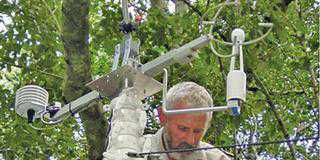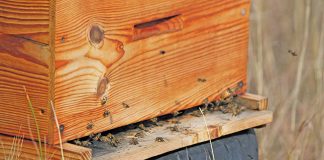The sugar industry has been investigating alternative uses for sugarcane for some time. Profit margins in the industry are slim and growers’ body, SA Canegrowers, is exploring ways to improve sustainability. One of these innovations is a biogas project.
“Canegrowers’ Innovations Group, a mix of staff and growers, decided to explore biogas production because laboratory trials indicated that sugarcane is a good feedstock for gas and biofertiliser production,” says Dr Thomas Funke, Canegrowers director for industrial affairs. “We believe we can use biogas production to form a holistic closed loop in our farming system. It can help growers become more sustainable.”
The ideal plant design
Members of the Canegrowers’ Innovations Group visited biogas plants in Germany to help formulate the ideal plant design, and settled on a low-cost, high-impact model. “We’ve designed a system that can be built by farmers using their own labour and equipment to make the process more affordable. The plant has a modular design and can be expanded from the original 10kW biodigester to 100kW,” says Funke.
Innovative materials
The estimated cost of the plant is about R700 000 for a 100m³ unit, depending on the level of construction undertaken by a farmer. Each plant will be designed according to the topography of the property. The concept entails using gravity in the production process to ensure that the plant has a low parasitic load. “It’ll be built using innovative construction materials and insulators to ensure that it’s efficient and climate-controlled,” explains Funke. “The inner dome will store the gas at above atmospheric pressure to be tapped off for use in other applications. The plant will also have an outlet from which the digestate can be pumped into a tanker for spreading on the lands.”
Pilot plant
A plot of vacant land has been identified in Amatikulu on the KwaZulu-Natal north coast for the pilot plant. Canegrowers’ Innovations Group member, Dave Littley, who has been actively researching the concept for the past five years, will be involved in the plant management. He says that farmers will be able to visit the pilot plant where the concept will be showcased.
The 100m³ plant will produce 10kW continuous supply, sufficient to run a small household and power a geyser, stove and small generator. “For the first 12 months, we’ll establish optimum temperatures, pressure and digestion times. Then we can immediately scale up to 100kW continuous supply, which is sufficient to meet the irrigation needs of a medium-sized farm,” says Littley.
Applications
The biogas produced by the biodigester has many uses. “The plant doesn’t produce only electricity. It can produce fuel, electricity, heat and light with the added benefit of fertiliser as a byproduct. We’ll also be looking at compressing gas to make liquid fuel, as diesel engines of most trucks and tractors can easily be converted to run on compressed gas,” says Littley.
Cost-saving
Most tests indicate that the biodigester will save farmers money. “For every R1 invested, we hope to get R1,20 in return. These plants are lucrative in Europe because the tariff for electricity and gas is roughly five times that of South Africa. But even here, we feel we can build something that will give a 20% return on investment,” he says.
If the plant is used to liquefy gas for tractors and vehicles, it should pay for itself within five years through savings on fertiliser and gas. “It may be slower to pay off the plant if it’s used to produce electricity rather than gas, as gas will be replacing diesel which costs in the region of R14/l, while electricity costs R0,75/ kW,” says Littley.
“Our ambition is to de-link from the grid because we expect Eskom prices to spiral once Medupi comes online. Electricity is crucial for irrigation farmers. They often say their losses are not due to lack of water, but from not having electricity to pump water.”
The Canegrowers’ Innovations Group plans to concentrate on using the plentiful supply of sugarcane trash and tops
as feedstock. However, any substrate with a medium to high sugar, starch or protein content and low lignin content is suitable. This includes maize silage, lawn clippings, feed residue, plant-based oils, manure, chicken litter and food residue.
Wood-based feedstock is not suitable as it is high in lignin and not digestable.
“The ideal size of feedstock particles is about the size of coffee grounds. However, it takes too much energy to grind them down. We need to break down feedstock to about 4mm, which is fine enough to digest without wasting energy on grinding. It is all about converting feedstock into energy that is of greater value than the feedstock,” explains Littley.
The digestate’s temperature will be kept at between 35°C and 39°C. Sugarcane tops and trash have the shortest digestion time to obtain optimum gas production, with a short in-and-out cycle of 10 to 12 days. Grass and maize silage’s cycle is 20 days, cattle manure is 32 days, and maize grain or starch crops is 50 days.
Maximising nutrient content
The feedstock recipe used in the EU generally has a 12:1 water to solids ratio. “But since gas output is directly related to the amount of carbon, we’ll also experiment with reducing this ratio to 3:1 to achieve the lowest water and maximum nutrient content. This will result in a more liquid and easily spreadable biofertiliser,” says Funke. A 10kW biodigester requires 1,5t feedstock/ day to run a farmhouse and staff quarters. “This can be supplied by a small sugarcane farm, as 1ha provides about 8t tops and trash and is enough to run the biodigester for approximately a week,” Funke says.
One 12-day cycle should yield 262m³ of digestate or biofertiliser. “While we take trash off the land, we spray this biofertiliser back onto the land to close the loop. A 100kW biodigester can produce enough biofertiliser to fertilise 100ha,” says Littley.
When spread onto lands at a rate of 40t/ ha, the biofertiliser has a nutrient value of 25kg N, 34kg P, 60kg K, 19kg Mg, 50kg Ca and 8kg S, similar to that of concentrated molasses solids (CMS).
Importantly, the biogas yield of a cycle should be 109m³/t, of which methane constitutes 60%. In May 2014, SA Canegrowers partnered with Astrum Energy to develop the concept and Biogas SA won the tender to build the plant. Construction is expected to commence in the last quarter of this year and be complete in less than a month. If all goes well, it should be producing by January next year.
Creating a real solution
“The idea is to make this a real solution and not a backyard plant,” says Littley. “As a start, we want to concentrate on getting the plant to work optimally, and then we’ll add automated systems. We ultimately want a fully automated, continuous system so that growers can rely on it for full-time irrigation or household needs. We want to build a mini power plant or mini refinery to produce regular fuel.”
While this is not new technology, the South African sugar industry has never looked at biogas scientifically before.
“We’re working towards a greener way of farming,” stresses Funke.
Phone Canegrowers communication manager, Jayne Ferguson, on 031 508 7200 or email her at [email protected].













